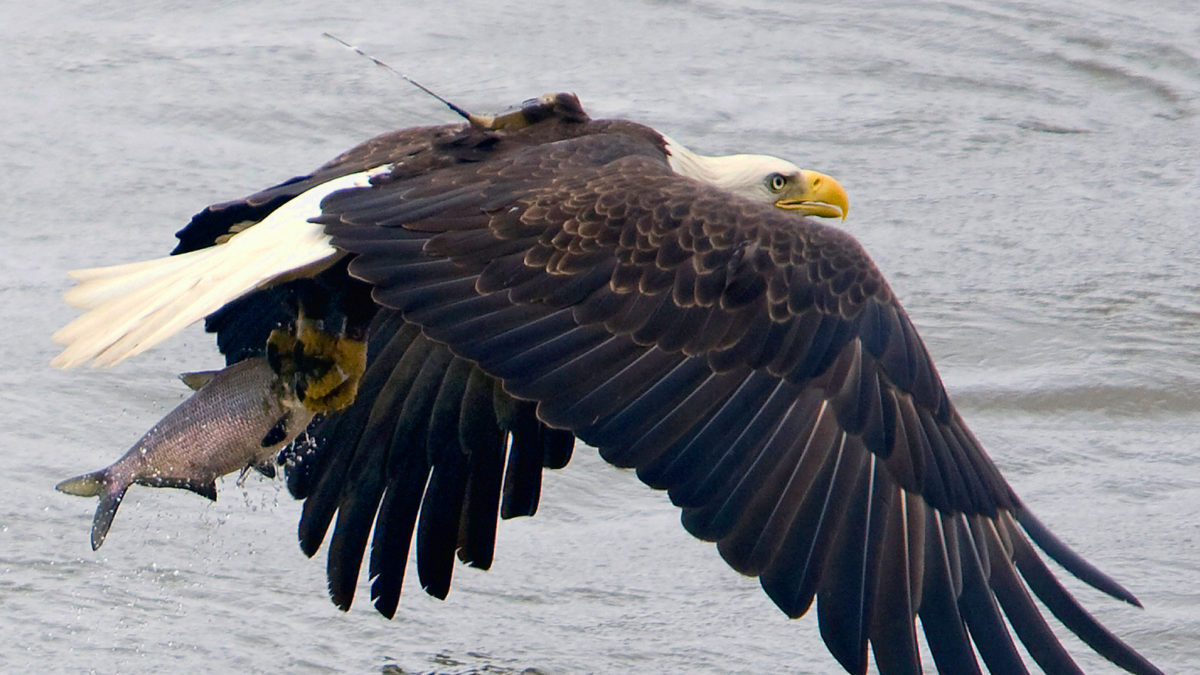Lower Susquehanna Eagles

Recent Literature published by CCB
July 18, 2024
Resident Canada geese and osprey
July 19, 2024By Bryan Watts
7/17/24
For bald eagles along the Atlantic Coas the Chesapeake Bay is a focus, and within the Chesapeake Bay the Conowingo Dam on the lower Susquehanna, Mason Neck on the Potomac, Fones Cliffs on the Rappahannock and the area around Jordon Point on the upper James are focal areas. In terms of access to observe large numbers of eagles, the Conowingo Dam is likely the best place in eastern North America. The lower Susquehanna is lined with high bluffs and towering trees that are ideal for eagles. During most of the year the exposed rocks below the dam gleam white with droppings from crowds of eagles, cormorants and gulls. It is the high concentration of fish created by the dam that draws the birds here. The plunge pool below the dam is teaming with fish and the sheer number of eagles stooping, tail chasing and stealing is a spectacle that brings photographers and eagle watchers from far and wide to the parking lot along the river.
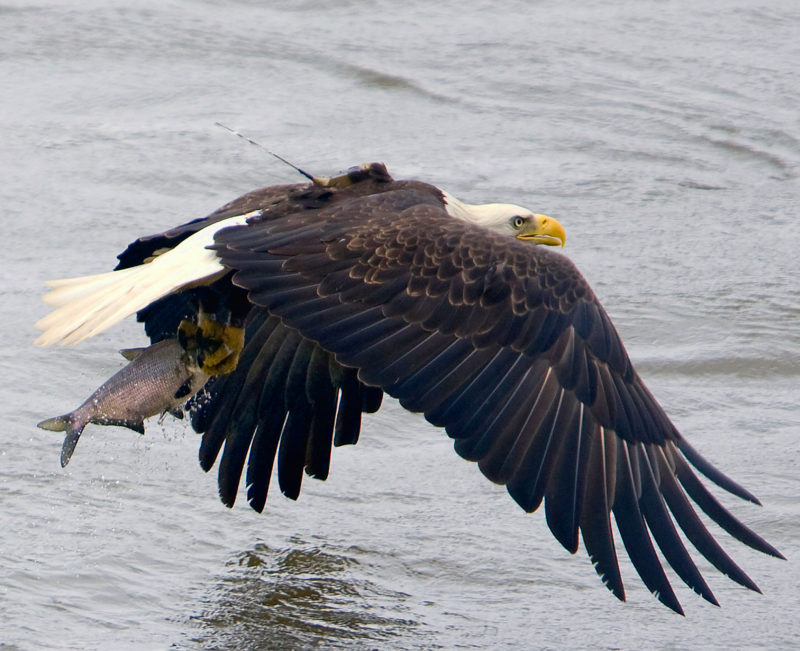
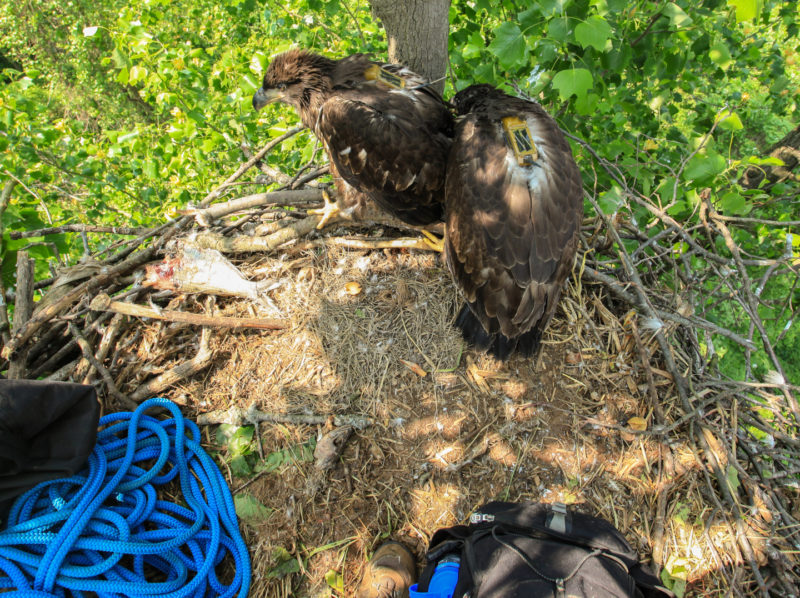
Lost in the waves of eagles that come to this place are the resident eagles that nest along the river. Many of the photographers lined along the fence are likely unaware that they are surrounded by a rapidly growing population of breeding eagles. These breeding pairs must contend with the hard-driving, vagrant eagles that put on feeding frenzies during the day and retire to large communal roosts during the evening. But they are thriving.
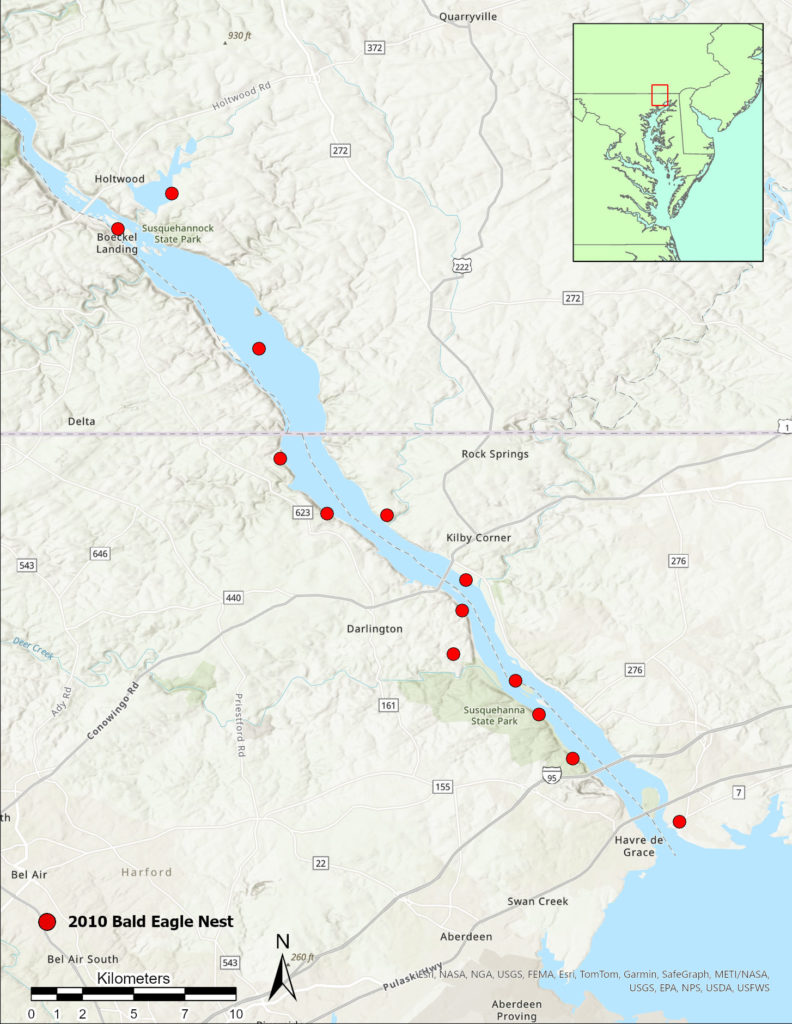
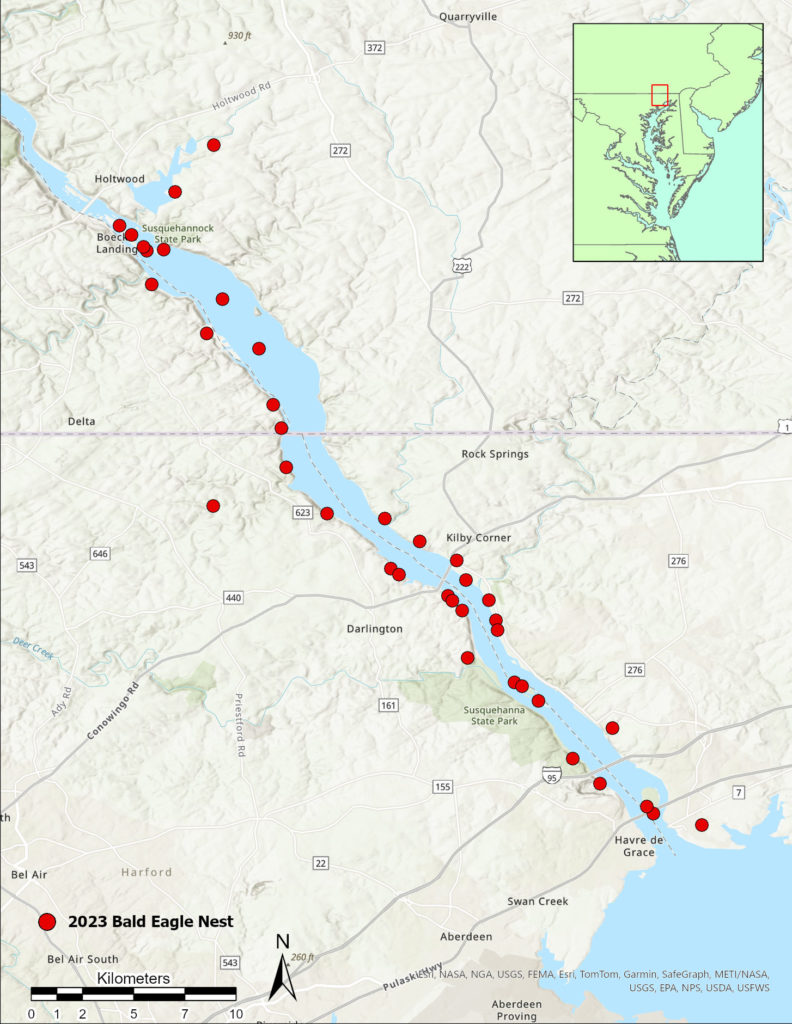
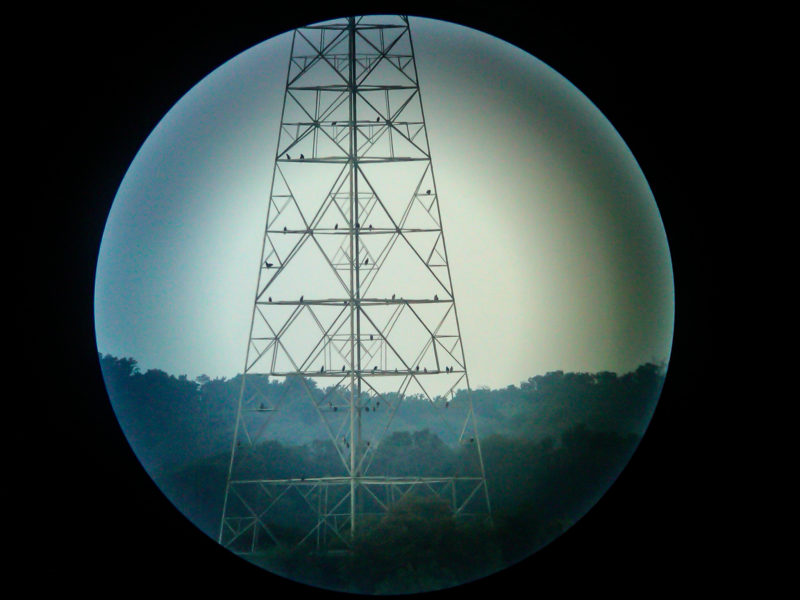
CCB first surveyed the breeding eagle population on the lower Susquehanna in 2010 and have conducted surveys every five years since. We mapped 13 occupied territories in 2010. By 2023 this number had ballooned to 43 pairs. The breeding population has more than tripled in just 10 years. As we have seen throughout their breeding range, nesting eagles are highly concentrated around the two dams on the lower river including the Conowingo downstream and Holtwood upstream. Eagles take advantage of the fish concentrations formed by the outfall. The bald eagle is a highly territorial species. Pairs nesting within areas with high concentrations of nonbreeding eagles must contend with the constant flow of eagles through their territories. How eagles adjust their behavior to nest within these settings continues to be a question of interest.

